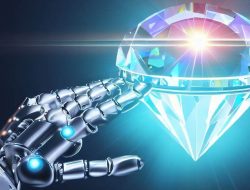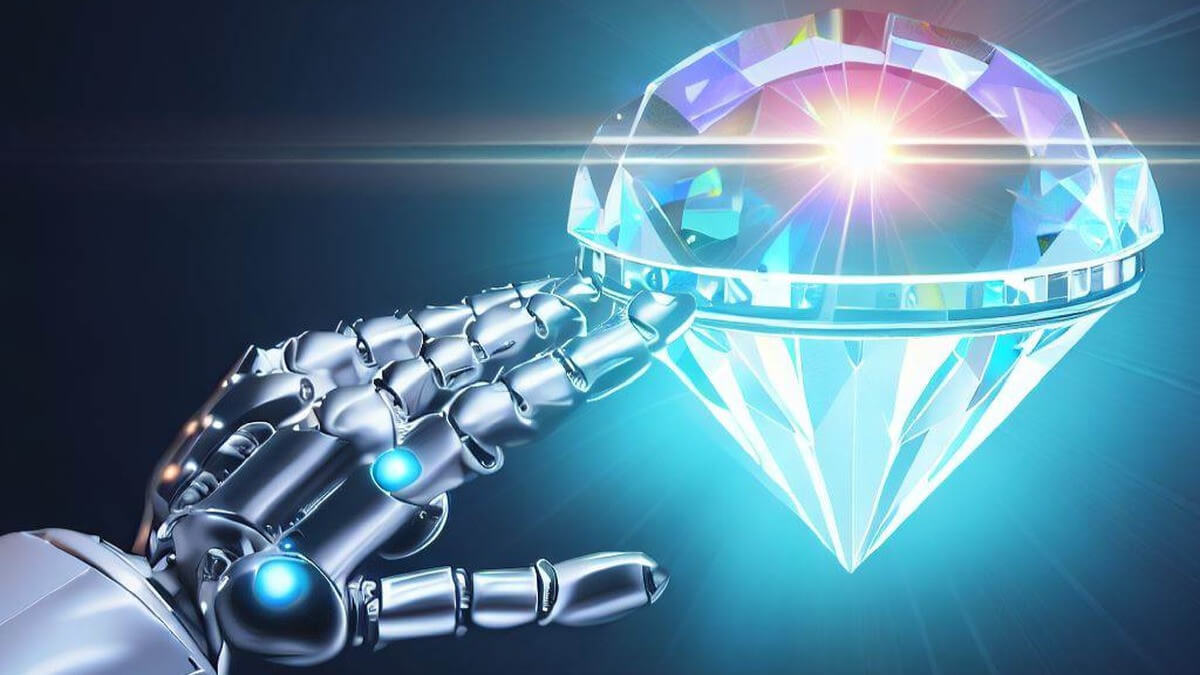Artificial Intelligence is Revolutionizing the Jewelry Industry – from algorithms to decoration. Whether it’s design tools, data tracking devices, or retail tools, AI is succeeding—even if this raises questions about ethics and the quality of creativity.
Artificial Intelligence is Revolutionizing the Jewelry Industry

swarovskijewelry – Artificial intelligence (AI) promises to transform the jewelry industry, bringing with it changes in design, manufacturing and retail businesses. The pandemic’s push toward digitalization has helped drive this journey, said Paola De Luca, founder and creative director of trend forecasting agency The Futurist. While it may take 5-10 years to fully accept the disruptive changes of AI, he said the industry is already undergoing major changes.
AI plays a diverse role in the industry, improving manufacturing, customization, 3D imaging and photography. and improve the overall customer experience. He also participates in market analysis, helps track and forecast data and sales, and plans inventory and production.
“The real revolution right now is our ability to query information instead of coding it,” De Luca said. “Embracing this change will strengthen the industry, and I see that as a very positive thing.”
A partner, not a competitor
Despite these obstacles, independent designers and manufacturers are exploring opportunities with popular AI software tools such as drawing. Midjourney and BlueWillow generators. Manufacturers in Thailand and Dubai say they are experimenting with AI, but have not yet integrated it into their production.
Today’s AI can create two-dimensional drawings that resemble blueprints or CAD methods. The transition from text commands to 3D printing is still in its infancy in the jewelery industry, says British jewelery historian Jack Ogden, who is giving a seminar on “How AI can disrupt the industry” at Munich’s Inhorgenta exhibition in 2023. Are designers. using a traditional pen or navigating the digital world of CAD, AI is emerging as a dynamic partner, providing tools and capabilities that are redefining the boundaries of artistic expression. In 2021, Belgian art research platform Artificial Intelligems, which explores jewelry decoration using artificial intelligence technology, conducted a co-creation experiment between an artist and an existing machine learning algorithm.
“124 artists and designers from around the world responded to our open call and submitted nearly 1,000 images,” said company founder Anneleen Swillen. “These images help train a machine learning algorithm, NVIDIA StyleGAN, to create new ‘tailored’ details called ‘Ornamutations’ using other images as source material for the artist’s work. This complicates issues such as authorship, ownership, copyright, agency, and changing .role of the artist.”
Canadian designer Nick Koss of Volund Jewelry has been using AI techniques to design personalized jewelry since 2015. He doesn’t see AI as a negative; he believes it should be used wisely and ethically. For him, this means managing technology to increase customer satisfaction, not simply reduce costs or simplify processes.
“We [at Volund] outline the desired outcome and let the simulated life form explore different solutions,” he explains. “The most promising results are then refined further by incorporating randomness. This process, similar to an alchemical transformation, reveals new and unexpected patterns. We stop the process when we find patterns that suit us.”
Koss menunjuk pada praktik praktis AI. penerapan untuk perhiasanCanadian designer Nick Koss of Volund Jewelry has been using AI techniques to design personalized jewelry since 2015. He doesn’t see AI as a negative; he believes it should be used wisely and ethically. For him, this means managing technology to increase customer satisfaction, not simply reduce costs or simplify processes.
“We [at Volund] outline the desired outcome and let the simulated life form explore various solutions,” he explains. “The most promising results are then further refined by incorporating randomness. This process, similar to an alchemical transformation, reveals new and unexpected patterns. We stop the process when we find patterns that suit us.”
Others, for example, suggested changes to increase the focus of jewelry, especially for pendants and necklaces. “AI can also suggest material [changes] or support [fundamental] changes to improve the safety and preservation of fine stones, and optimize the placement of wax models in the bottle to ensure efficient flow during pouring.”
Baca juga : Importance of Technology in Jewelry Design
In general Perception Dilemma
People new to AI experience fear, which often stems from misunderstanding or lack of full understanding. Some worry that artificial intelligence will take over their jobs. However, de Luca emphasized that AI is a solid tool for enhancing human creativity and exploring further possibilities.
“AI threatens [jobs that involve] repetitive tasks [because it’s good] to automate such activities,” he said. perhaps skills in effective data analysis “do not foster creativity.”
Koss agrees, and emphasizes that AI should enhance imagination and critical thinking, not replace them.
“Progress will definitely make those who don’t want to adapt obsolete,” he said allows designers to go beyond existing frameworks and conventions.” According to him, a particularly interesting aspect is “the ability to visualize things that seem impossible”. I wonder if AI can generate more ideas than I, or a person -people in general, imagine.”
But distrust of the technology faced in the jewelry world has made some designers hesitant to embrace it publicly. “Eight years ago, when we discussed artificial intelligence, we faced skepticism from industry leaders, and some saw it as quackery,” Koss recalls. “Fortunately, the outlook has improved. After facing initial challenges and significant investment, we have achieved clear returns.”
Some people may reject AI altogether or skip it out of reactionary feelings, Swillen admits. “That dynamic has started to happen. There are many possibilities, and it’s not a black-and-white scenario.”
Baca juga : Alat Pembuatan Konten AI yang Tidak Membutuhkan Pekerjaan Anda
Reasonable accessibility
AI is now more accessible, making it effective and affordable. AI has democratized content creation, says Swillen: Gesture models. such as the Dall-E image generator and the language-based ChatGPT system allow anyone with an internet connection to create content instantly. This raises the question of who has fair access to these tools and who does not.” user data. Swillen advises designers and manufacturers to keep this in mind when using AI models and ensure their use is ethical.”
Many of these tools are trained on data collected from the Internet, which can damage artists’ work without their consent. There is a risk of decontextualization of culture and craft, leading to a loss of awareness of the origins of certain images or information.”
Reasonable accessibility
AI is now more accessible, making it effective and affordable. AI has democratized content creation, says Swillen: Gesture models. such as the Dall-E image generator and the language-based ChatGPT system allow anyone with an internet connection to create content instantly. This raises the question of who has fair access to these tools and who does not.” user data. Swillen advises designers and manufacturers to keep this in mind when using AI models and ensure their use is ethical.”
Many of these tools are trained on data collected from the Internet, which can damage artists’ work without their consent. There is a risk of decontextualization of culture and craft, leading to a loss of awareness of the origins of certain images or information.”
Even interesting questions can end up in the field of AI. “Should only humans judge the attractiveness of jewelry designed by humans or machines?” Ogden asked. “Artificial intelligence can immediately assess the marketability of a model by analyzing the sales patterns of successful jewelry. This approach may already be used in some industries.

